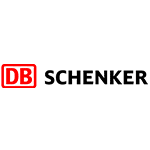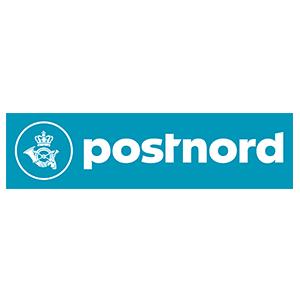This article will explore some of the most important factors to consider when making this decision. We’ll also provide some helpful tips on how to set a competitive price that will help you maximize your profits. The markup calculator (alternatively spelled as “mark up calculator”) is a business tool most often used to calculate your sale price.
- The business then decides on an additional margin above the cost of production.
- The profit may also be called gross profit or contribution, and would typically cover the general business overhead and net profit target assigned to the business operation.
- This will help you determine how much profit you’ll make on each sale and your overall profit margin.
- Beyond just being a number, the selling price is a crucial aspect of the business world.
- ASP is the average of all the prices at which a particular product has been sold over time.
- Next, we add up the number of units sold, which comes out to 43,000.
Some management and customers are set in this pricing model and we can’t seem to get out of this cost-plus approach. If anything, I think everyone believes MSRP will increase due to value-added pricing, but some of it may decrease. When you’re calculating your net profit margin, it’s important to consider overhead costs and fixed costs.
Things to consider when pricing your product
The price for the same product or service may vary across buyers based on the seller’s discretion. The selling price is the amount a customer pays to buy a product or service. We show you how to calculate a product’s selling price using the selling price formula in Excel. When a company is mainly built on one product, the investment community will monitor the average selling price of that product. A drop in price can point to rising competition, lower pricing power with their customers, or a decrease in demand, which can lead to failure.
Now you can see how easy it is to change the formula to align with the needs of your specific business plan and products. In addition, pricing data can be compared across close competitors to ensure price competitiveness in the market vis-a-vis competitors. “Using these principles, we publish pricing and offer the ability to buy online for SMB buyers. For SMB buyers we publish a starting accounting equation definition rate, but still encourage prospects to meet with a consultant for a custom quote and price based on their needs. Lastly, for enterprise buyers, we do not publish pricing on our website given the high degree of variability and customization required for that segment. There’s no doubt a suitable product selling price plays a crucial role in helping them achieve these objectives.
- Still, taking into consideration the behavior of consumers in a competitive market can help you to optimize the price of a product.
- For an internally manufactured item, the cost would be made up of the material and labour/manufacturing overhead costs.
- The average selling price (ASP) is a term that refers to the price that a good or service is sold for.
- Cost-plus pricing also doesn’t consider the customer, what their perceived value of your product is, or how much they’re willing to spend – it’s very company-centric.
If you are not using sales tracking software, the average selling price is still painless to calculate with spreadsheet software. When using this tool, add up all columns with your sales revenue numbers, and divide by the number of units sold. Using an average selling price will help your company identify trends in the market. Say a company like Bose released a set of headphones for $300 last year, and they made 150,000 sales. This year, they released their newest pair at $250 and sold 250,000 units.
Cost-plus pricing cons:
While the average selling price (ASP) can certainly be tracked for service-oriented companies, the ASP metric is generally more applicable for industries that sell physical products. The average selling price, often abbreviated as “ASP”, represents the average price paid by customers for past sales. Before calculating your selling price, it’s important to understand the average selling price of existing products already available in the market. You can use it to work out if your business will be profitable at your current pricing strategy. This means that, on average, each T-shirt was sold for $20 during that specific period.
Average selling price vs. selling price
While there’s no quick fix to determine an appropriate margin for your product, the standard margin is 40-50%. More often than not, bulk pricing is used by companies operating in B2B and wholesale. A flat-rate subscription is best suited to products that have limited features and are targeted towards one buyer persona.
Simply multiply the total costs by 2 (100% markup or 50% margin) or by 3 (200% markup or 67% margin). This will help you establish a suitable markup to put on your product. If your business stocks up on inventory in bulk, it may be worth calculating your product selling price by unit. You know your manufacturing costs and resources spent, but is this enough to add a markup and call it a day?
How to Find Selling Price Per Unit
Get instant access to video lessons taught by experienced investment bankers. Learn financial statement modeling, DCF, M&A, LBO, Comps and Excel shortcuts. “I also would recommend creating a pricing committee if you work for a mid/large size company. Pricing impacts many departments and therefore many folks will want to weigh in.
The final step is to divide the total revenue by the number of units sold. If your business buys products from a manufacturer in bulk, you might need to calculate the selling price per unit. You can do this by finding the total cost of the units purchased and dividing that by the number of units purchased.
You can easily find out a business’s pricing strategy by looking at some of their sales data and calculating the average sale price. Not only will you know the average sale price, but you can also compare the average sale price and amount of products sold for each year. You just have to divide the total revenue by the number of products sold, and then you’ll know the average selling price of your product.
How Open Collective Uses Wise Business to Automate Payments Around the World – A Case Study
Here we explore craft production and how to be a successful craft worker. You can check out the video below for a better understanding of how to track the costs of materials and products in Katana. This will allow you to quickly get a better overview of your costs and make better pricing decisions. Let’s use the example of furniture manufacturers to illustrate the steps to finding a pricing strategy. Payhawk has partnered with Wise Platform to integrate fast, low-cost international payment services directly into the Payhawk platform
Wise Platform is…
And if it languishes on the market for too long with an inflated price tag, that can further depress the ultimate selling price and alienate potential buyers. Markup is the difference between a product’s cost and its selling price. Generally, depending on the industry, it is expressed as a percentage of cost. It’s either the one you already have, or those from your competitors. From these reports, you can use accounting to get on track for a profitable pricing strategy.
The cost price is the price a retailer paid for the product, while the profit margin is a percentage of the cost price. For example, WTMWB (What the Market Will Bear) is better during short periods when you need to recoup costs quickly, such as releasing a new SKU after a period of research and development. Say a company has $10,000 in revenue, and the cost of goods sold (COGS) is $6,000. Dividing this with the original $10,000 leaves you with a gross profit margin of 0.4 or 40%.















